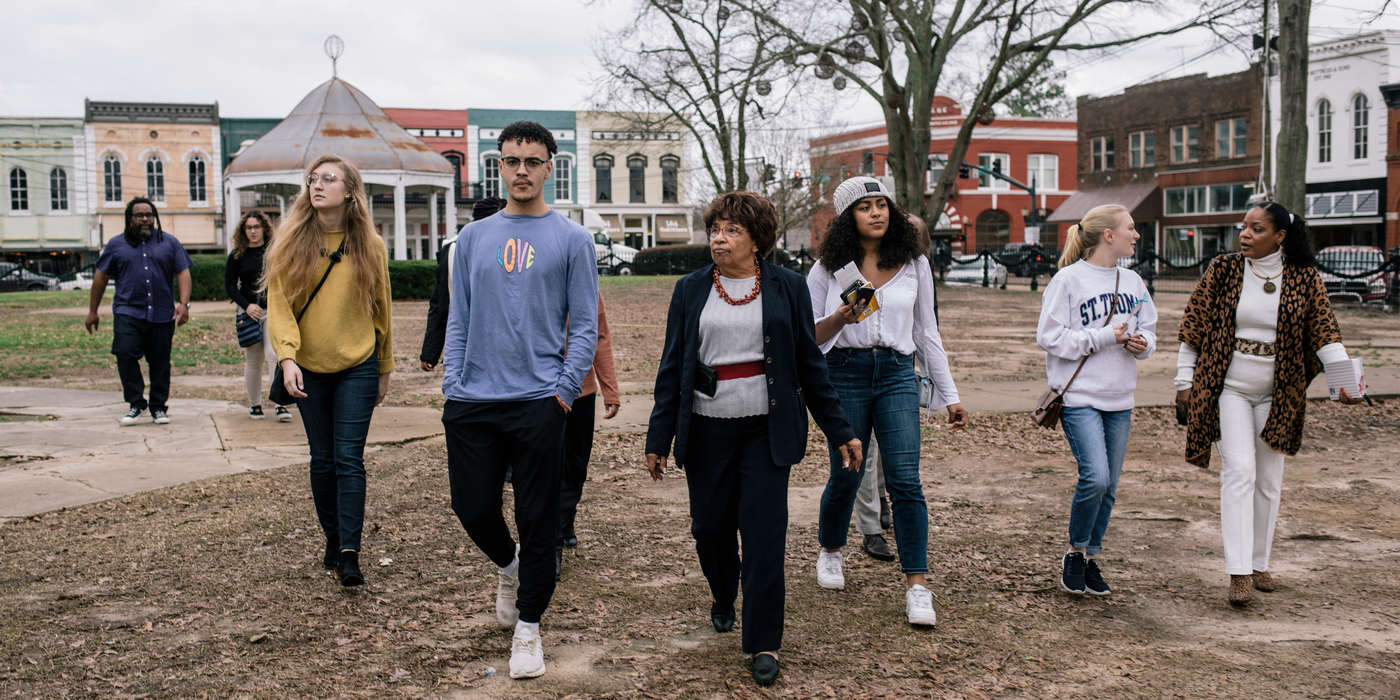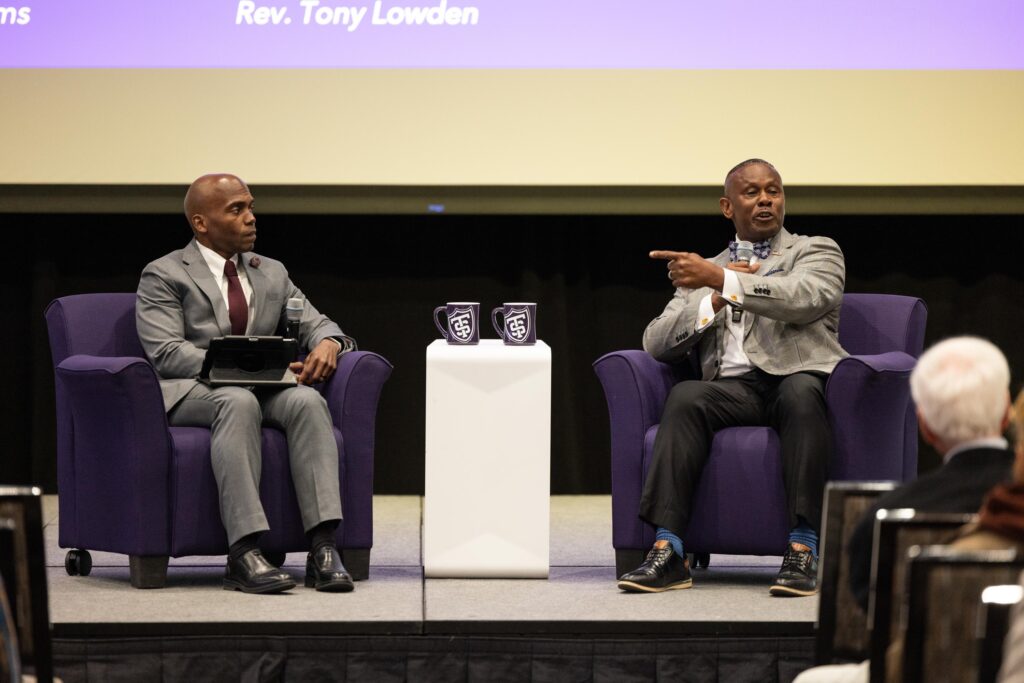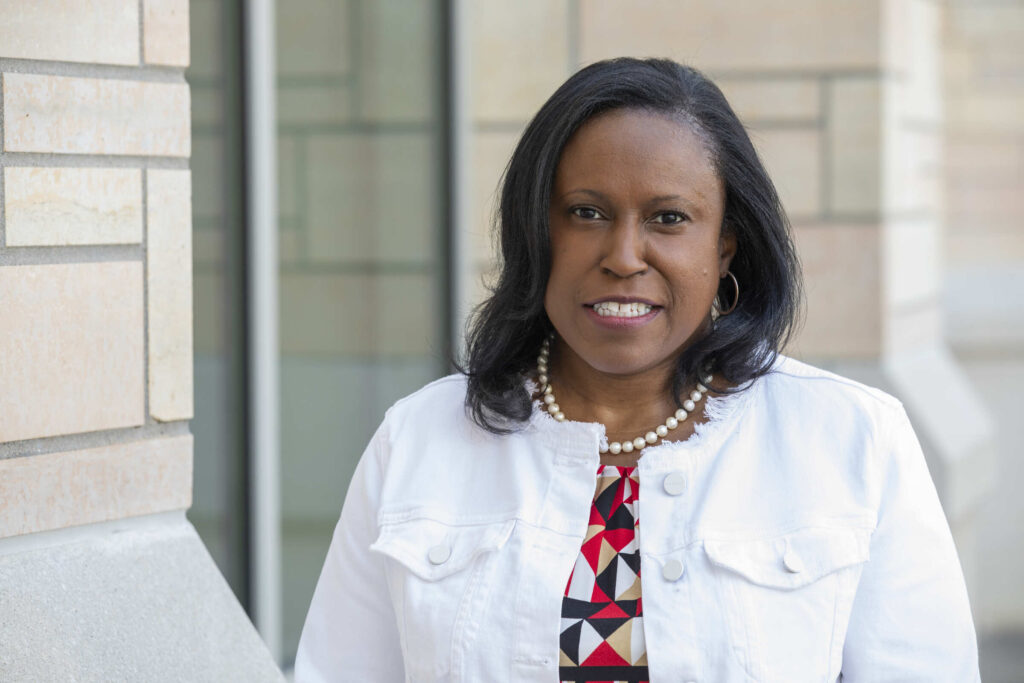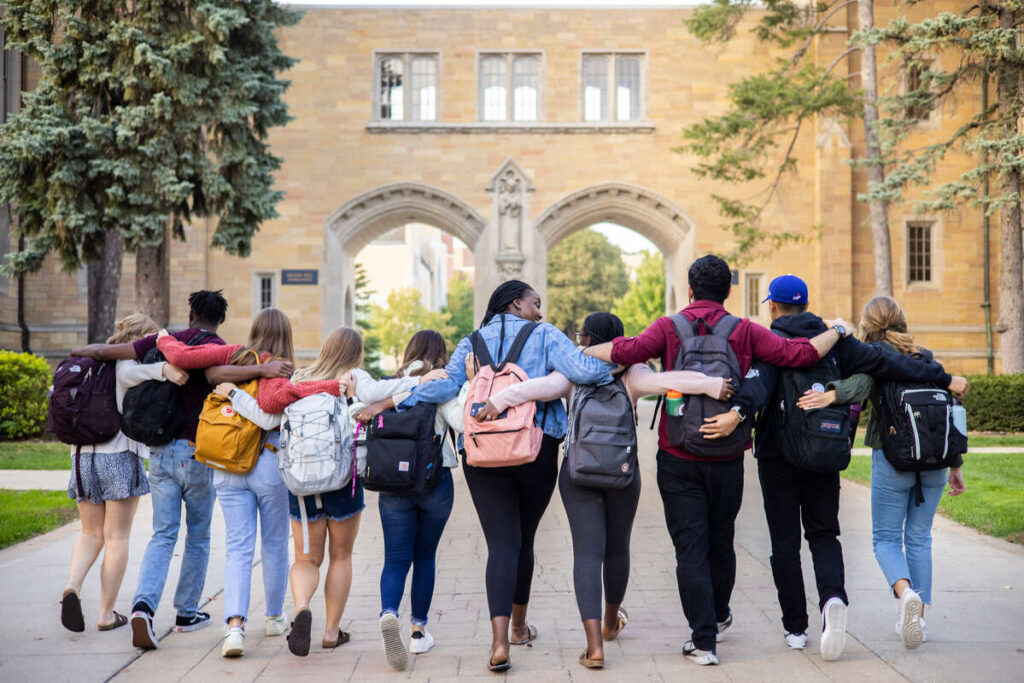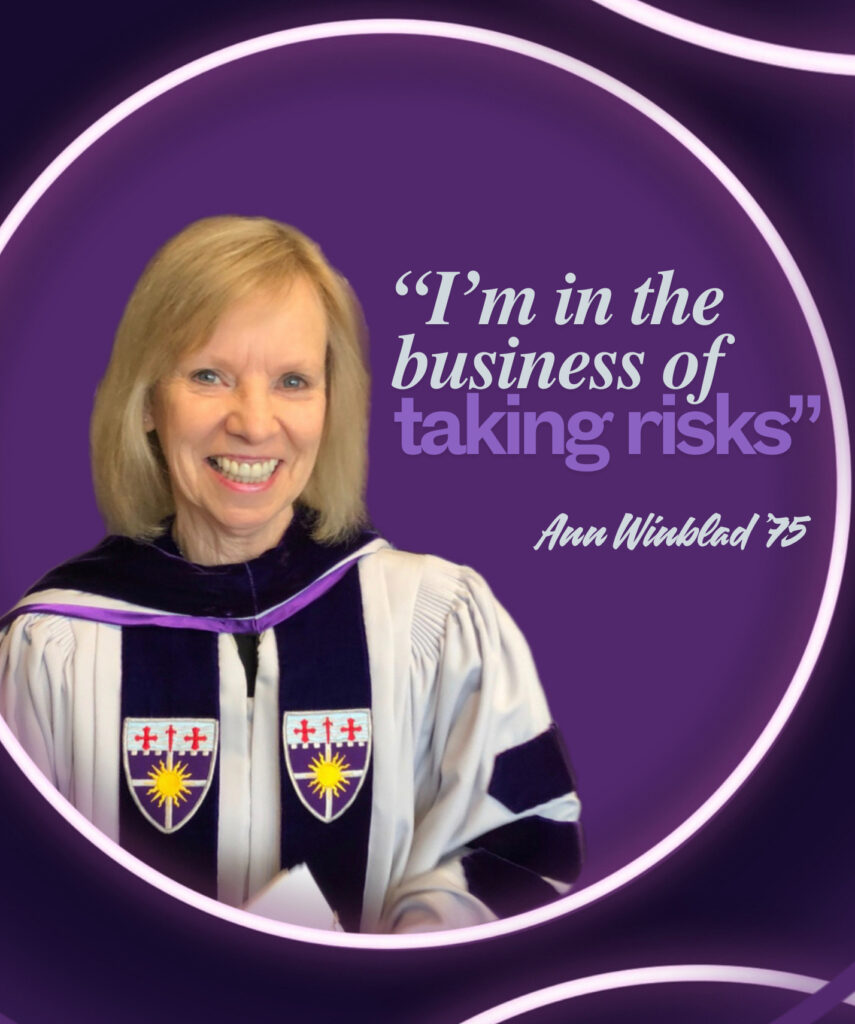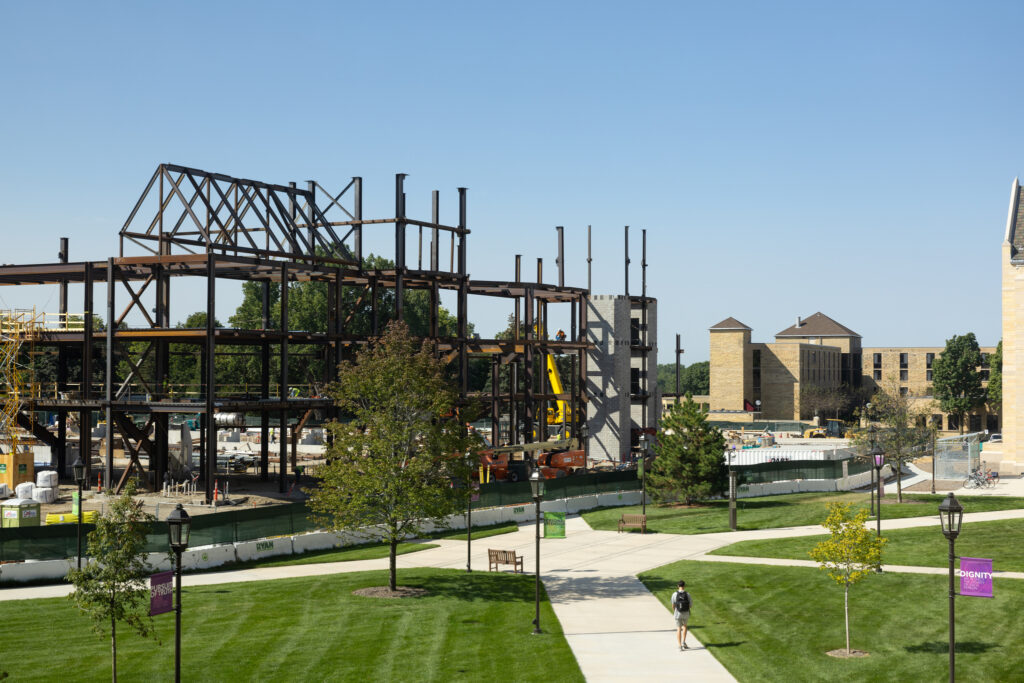In January, eight students from St. Thomas experienced just that when they met important figures in the civil rights movement, some who were never acknowledged in books, on the We March for Justice study tour, the 10th such annual trip. They traveled to Georgia, Alabama, Mississippi and Tennessee, talking with civil rights foot soldiers who shared their stories, not just to teach, but to inspire the students to be persistent, as they had been, and still are.
They toured Canton, Mississippi, with Dr. Flonzie Brown Wright as their guide. During the civil rights movement, Dr. Wright helped register thousands of voters in Mississippi. She was the first African American female election judge post-Reconstruction Era.
They sang freedom songs with Dr. Hollis Watkins, an original member of the Student Nonviolent Coordinating Committee, a civil rights group formed to give younger African Americans more of a voice in the civil rights movement.
And they heard the back story of Emmett Till, a 14-year-old African American who was brutally murdered in Mississippi in 1955 for allegedly offending a white woman.
“The Emmett Till story, unfortunately, has many versions of the truth,” said Cynthia Fraction, director of the Excel! Research Scholars Program at St. Thomas and co-leader of the study tour. “We had the rare opportunity to meet with Mayor Johnny B. Thomas, who is the son of one of the black men whose story doesn’t get told a lot, and it challenges the students.”
The mayor’s father worked for the two men who were acquitted for the murder.
“You just don’t get to hear that in textbooks,” Fraction said.
Along with Fraction, College of Arts and Sciences professors Dr. Todd Lawrence, English Program, and Dr. David Williard, History Program, led the students on the trip.
“The faculty and myself – we make an effort to put what students are seeing into perspective so that when they come home, they can maybe see life through a little clearer lens,” Fraction said.
The St. Thomas group met with foot soldiers who recounted the history of their lives and emphasized the connection of their history to the future. The students and leaders were profoundly affected by their stories, as you can read from their comments below.
Special thanks to Mark Brown, director of photography and visual media at St. Thomas, for documenting the feelings and reflections on this living history journey.
“The most powerful moment for me was the Emmett Till Historic Intrepid Center and the tour with Mayor Johnny Thomas. … Just to digest and experience the whole story, no holds barred, that really hit me emotionally and made me realize that the movement is not just Martin Luther King Jr. … but it’s a whole collective and a whole group of people coming together to fight for their dignity.” Jonathan Michael Rosario, sophomore
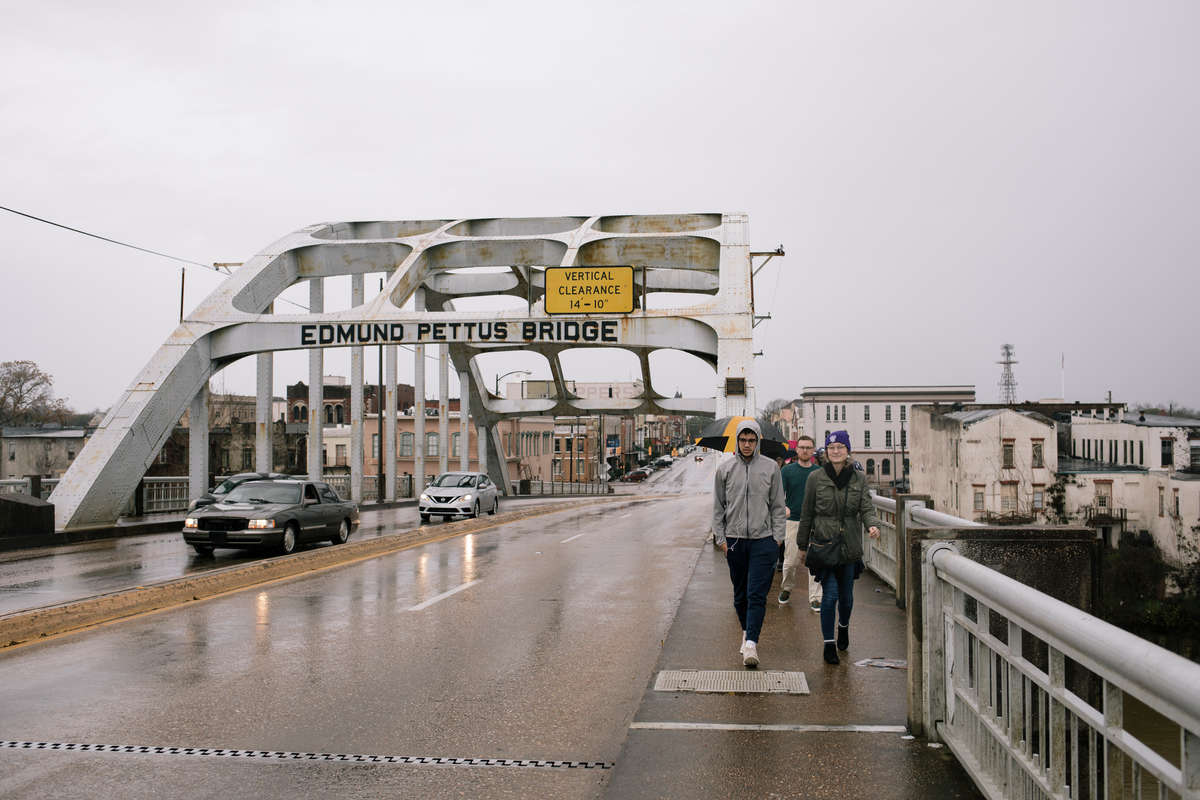
Throughout the trip, students visited historically significant sites from the civil rights movement, including the Edmund Pettus Bridge in Selma, Alabama, where armed police brutally beat peaceful demonstrators during a conflict known as "Bloody Sunday."
“[This trip] gives you a chance to hear voices that are often covered up by the rich and by the powerful and by those put into a position of privilege. … We’re learning all about these voices that have been silenced, that have had to fight their way up to be heard.” Alyssa Marie Eggersgluss, senior

Mr. Elmore Nickleberry, left, is pictured with a replica of the “I Am a Man” picket sign he and others carried while fighting for equal rights and equal pay during the Memphis Sanitation Workers' Strike in 1968. Ms. Elaine Turner, right, and her sisters were arrested 17 times while protesting Jim Crow segregation in Memphis. Both shared their stories with students.
“I’ve been noticing [the foot soldiers] talk about it so casually, like it wasn’t something that has changed all of our lives, our generation. Especially being an African American, they paved the way for us. … Hearing what it meant to them personally … is something that’s super meaningful because it was more than just ‘we want to be free’ or ‘we want to be equal,’ it was a personal stake for each of those individuals.” Jaia Katherine Johnson, first-year
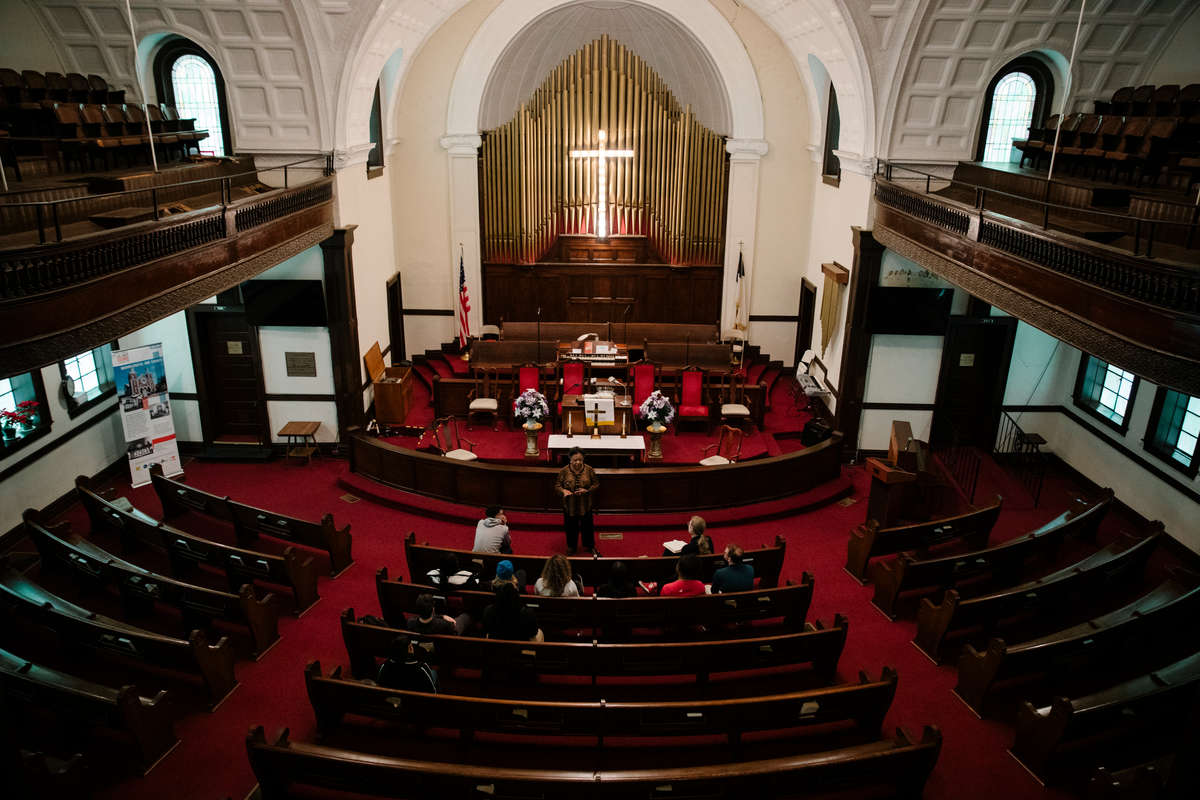
Students soaked up history by listening to Joyce O’Neill at the Brown Chapel AME Baptist Church in Selma, Alabama. The church was a starting point for the Selma to Montgomery marches in 1965.
“As Dr. Wright said, ‘Movements change but commitments don’t,’ and I think that’s very, very true in terms of all these foot soldiers. Their commitments are very strong; they’re very much still involved in all that they’re doing. However, movements have definitely changed and people need to start realizing that we need to be more committed like these older people because we need to keep the movement alive and the stories alive and the experiences alive.” Nasteho Mahad Yasin, Dougherty Family College second-year

Civil rights historian and activist Joyce O’Neill, left, speaks to students at Brown Chapel AME Baptist Church in Selma. Dr. Hollis Watkins, right, was one of the first Mississippians to join the Student Nonviolent Coordinating Committee. He traveled the state organizing voter registration efforts. Dr. Watkins shared stories and freedom songs with St. Thomas students at Tougaloo College in Mississippi.
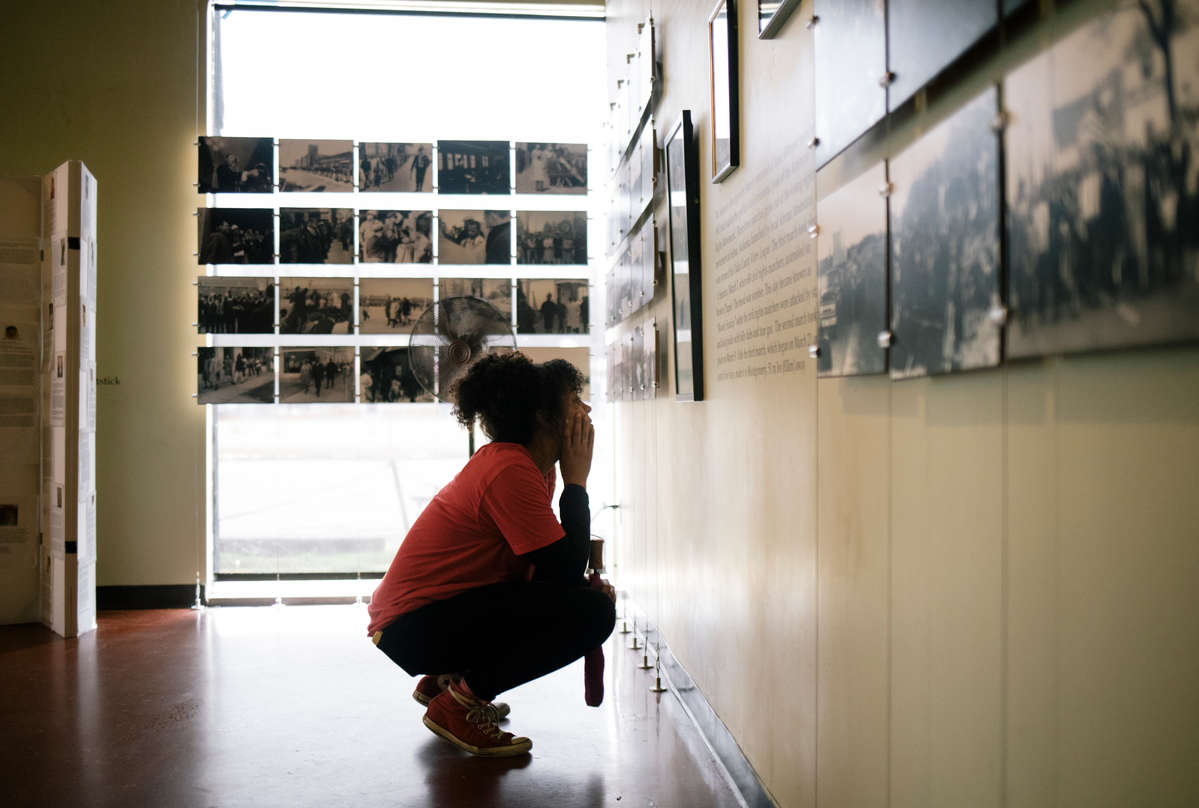
Tiaryn Daniels, a St. Thomas student, looks at an exhibit at the National Voting Rights Museum and Institute in Selma, Alabama.
“Dr. Wright loves to show people just how tough it was for them, but her underpinning message is ‘commitment is everything.’ First of all, do you have one or are you just existing? What’s your commitment? What’s your passion? You can be in whatever field you want to major in, but you still have to have a commitment or a passion for something that helps not only your people, but all people in America move forward for a healthy place for everybody.” Cynthia Fraction, study trip founder and director of the Excel! Research Scholars Program
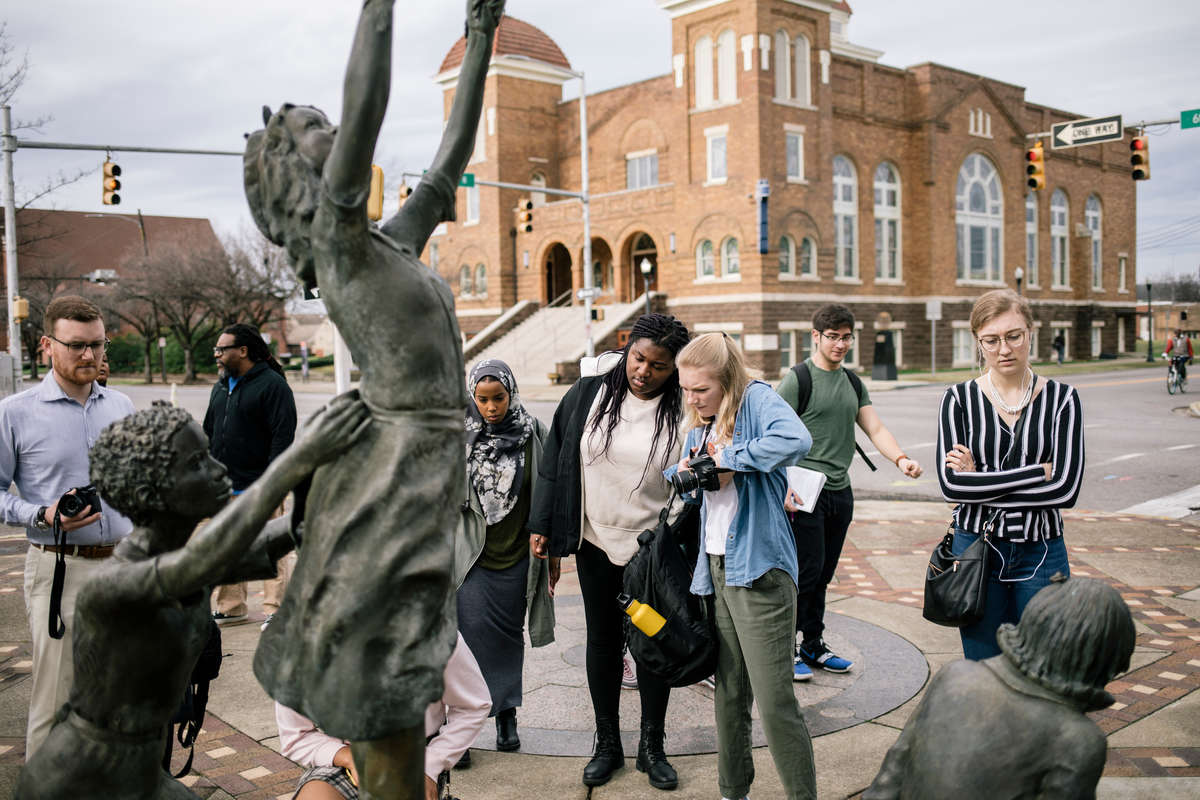
Students look at "Four Spirits" sculpture in Kelly Ingram Park, across from the 16th Street Baptist Church in Birmingham, Alabama. The statue commemorates the four young victims of a bombing that occurred at the church in 1963.
“I think it’s very important for white people to hear this more than just reading it through textbooks. And it’s humbling, it’s powerful, emotional. It makes you rethink who you are, what you can do, how things — different people, what they have to say – it just really touches down and makes you realize like, ‘Wow, all these things that people have done.’” Julia Nicole Walker, sophomore
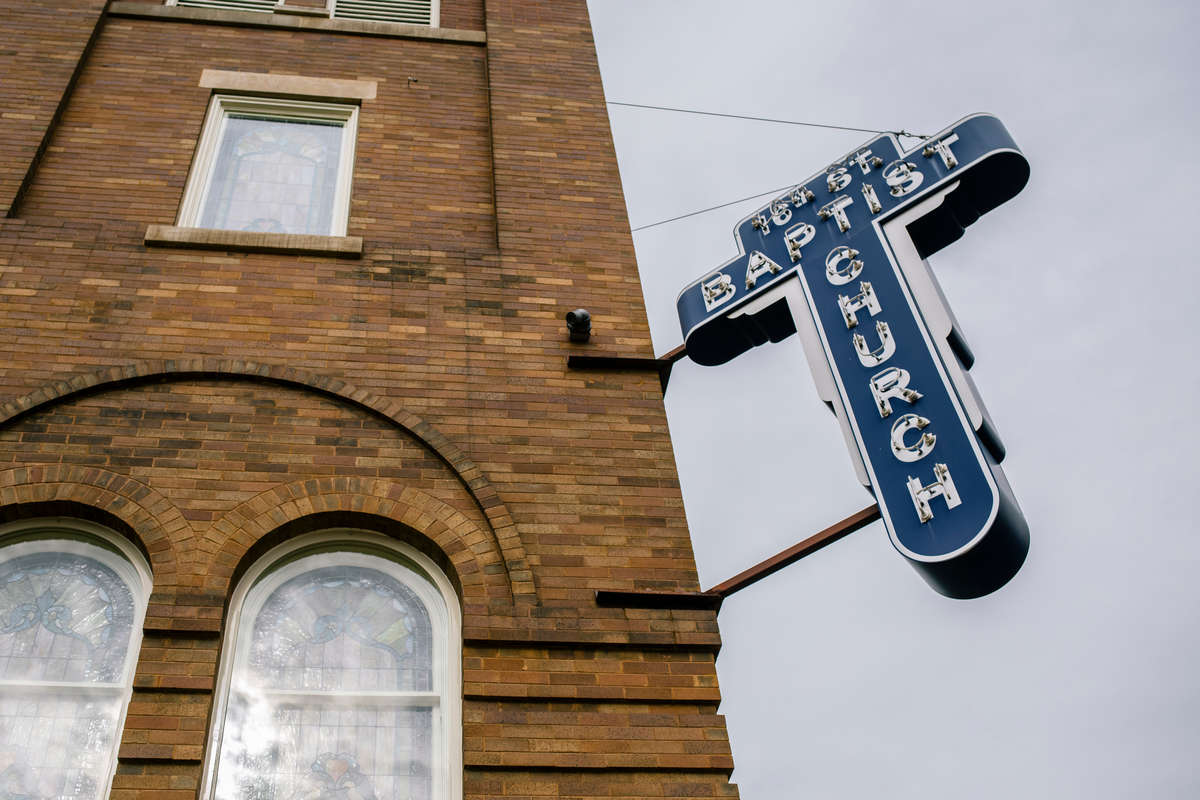
The 16th Street Baptist Church, where a bombing killed four young girls in 1963.
“[Students] think they’re going to ask questions and engage with civil rights veterans in a one-way conversation, but what they don’t realize until they see it, is that those people in their 70s, 80s, 90s are as eager to learn from them about how the legacies that they produced are informing our young people today. Watching that dialogue happen between people of different generations from very different parts of the world who may have thought that they had very little in common but are the common carriers of our society is really, really rich for me.” History Professor David Williard
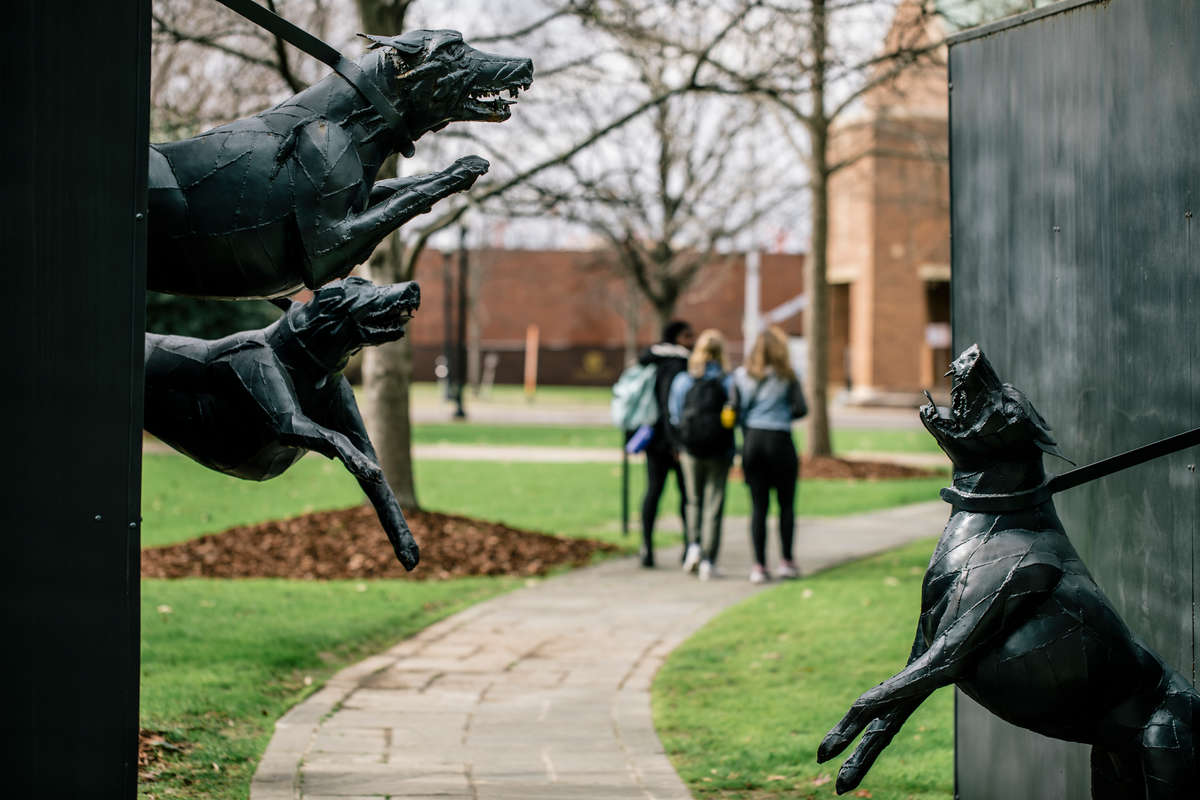
Students walk past a sculptural installation in Birmingham's Kelly Ingram Park depicting the dogs used by law enforcement agencies to break up peaceful protests.
“You’re going to be transformed, and you have to take that transformation home with you and help to transform others. … We want this to be a lifelong thing. You keep thinking about these people, keep going back to the things that they’ve said, keep going back to the things that you’ve learned and understand how those things are applicable to your life and how they can guide the way you act in your life now and in the future.” English Professor Todd Lawrence

Student Connor Johnson, left, pauses for reflection on the steps of the 16th Street Baptist Church in Birmingham, Alabama. Students look at a Confederate monument in Sumner, Mississippi, outside the courthouse where Emmett Till's killers were put on trial for murder.
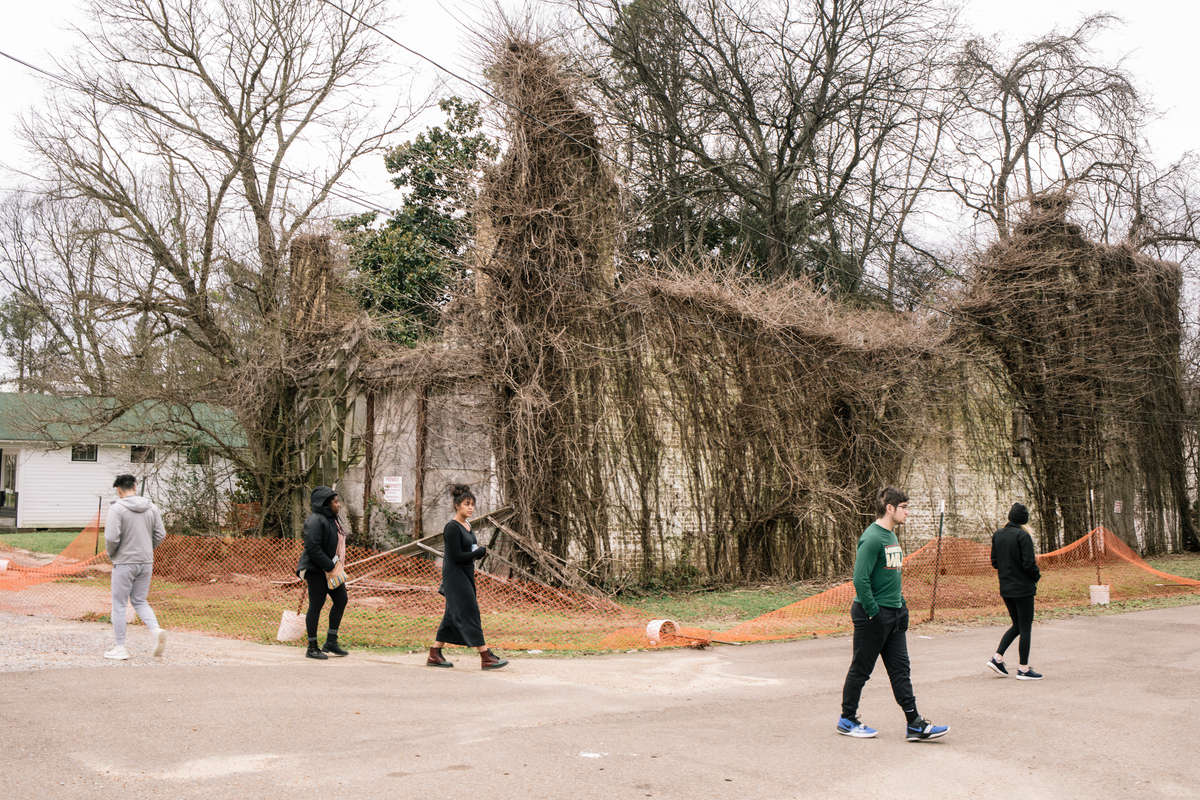
Students walk past the remnants of Bryant's Grocery and Meat Market in Money, Mississippi, where Emmett Till’s alleged interaction with a white woman eventually cost the 14-year-old Chicago boy his life.
“Just thinking about the psychological trauma that black people had to go through because of lynchings, and we barely even cover that in history class. It makes me sad, makes me angry, and kind of makes me reflect on how much things have actually changed.” Jane Nkechi Ude, junior
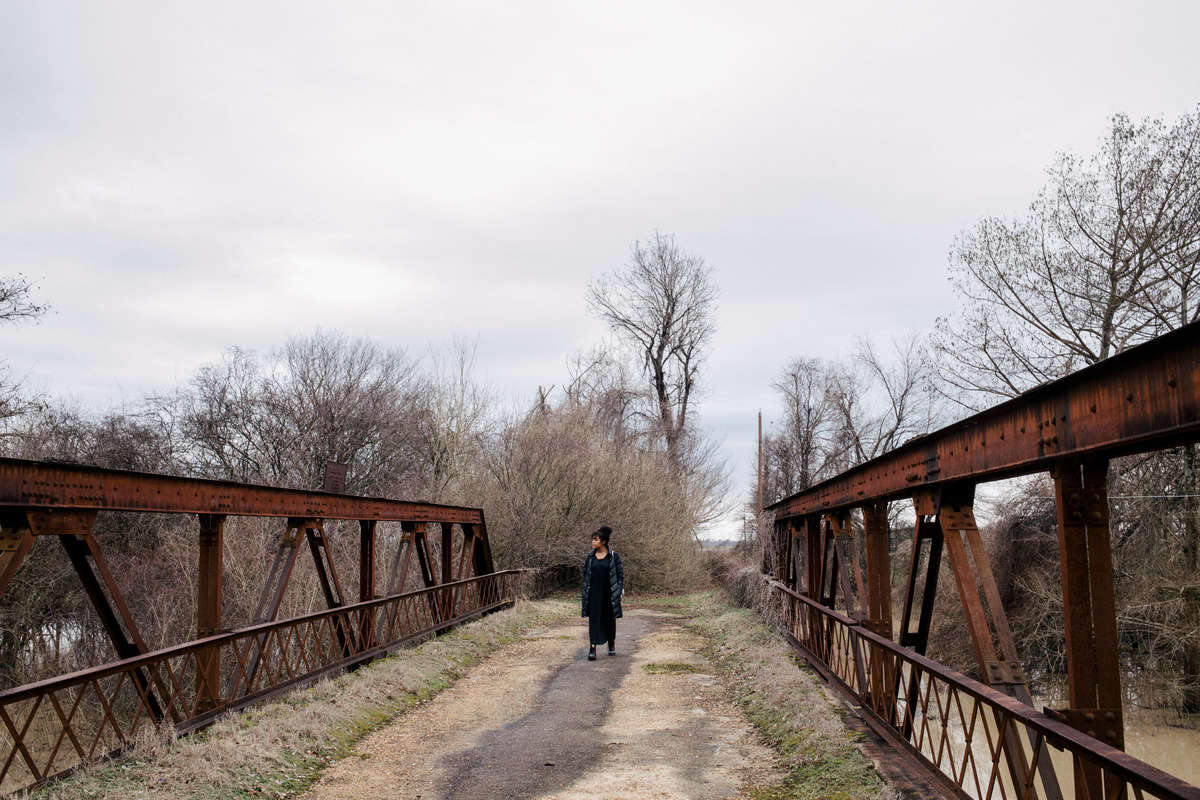
Tiaryn Daniels walks across a bridge at Black Bayou in Glendora, Mississippi. This is where historian Johnny Thomas says Emmett Till’s body was dumped in 1955.

Arrest mugshots of Freedom Riders, left, civil rights activists who traveled south to protest segregation, and an installation documenting Mississippi lynchings, right, at the Mississippi Civil Rights Museum.
